(Editor’s Note: This post has been updated to include information from Metro Louisville submitted after our press deadline. Addition highlighted in yellow below.)
Set your Tardis for Sunday, June 14, 1903 at the corner of Seventh Street and Kentucky Street in the Limerick neighborhood. Step out and you’ll hear the cheers of six thousand baseball fans rooting for the Louisville Colonels. Eclipse Ball Park was located on that corner a century ago before it later moved again to Eastern Parkway. The home team wore white uniforms with maroon trimmings.
The stadium, enlarged by 3,000 seats in the off-season for a total just shy of 10,000, was rocking with crowds celebrating a big win over St. Paul. A line drive by Peter Childs sealed the win at 3 to 1 in the 8th inning and the crowd went wild.
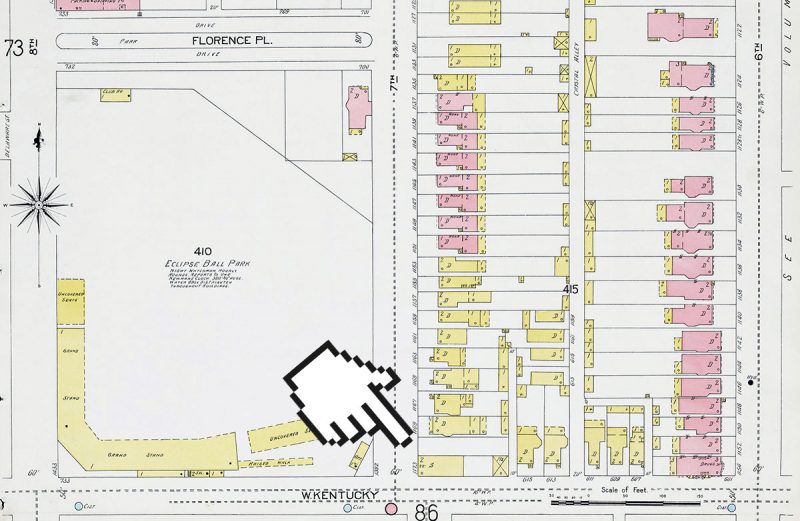
“The long rows of bleacherites (sic) bent up and down with flutterings of hats, and the swish of of canes and umbrellas,” the Courier-Journal reported the next morning. “The grandstand was a bedlam of shrieks, stamping feet, and waving hats… men and boys did handsprings and other athletic stunts in their exuberance of joy.”
Those were heady times for Limerick, a tiny wedge on the side of Old Louisville and SoBro between Breckinridge and Myrtle streets. And a cluster of buildings on the northeast corner of Kentucky and Seventh watched over it all. Franconia’s Grocery anchored the corner in those days. Many a baseball reveler may have stopped in to grab a cigarette from Franconia’s, which allegedly sold them cheap without a licence. But now the cluster of buildings—including the corner store, a house, and a back structure—is in jeopardy.

Early History
The corner building at 967 South Seventh Street operated as a grocery store from 1900 to around 1950. Louis Franconia operated his grocery for the first 25 years. He built and lived in a house next door around 1913, according to a staff report by Metro Louisville. He lived at the 965 South Seventh Street address until 1919 when records show it switching to rental, that report continues. Rental tenants, the staff report indicates, included a policeman, an employee of Mengel Co., and several employees of the nearby L&N railroad.
The corner was later known as Doyle’s Market until 1940 and C&D Grocery in 1950. That year, classified ads listed the “newly renovated” space as available with a new storefront facade and hardwood floors. By then, though, housing projects had replaced the stadium, and the building remained for lease.
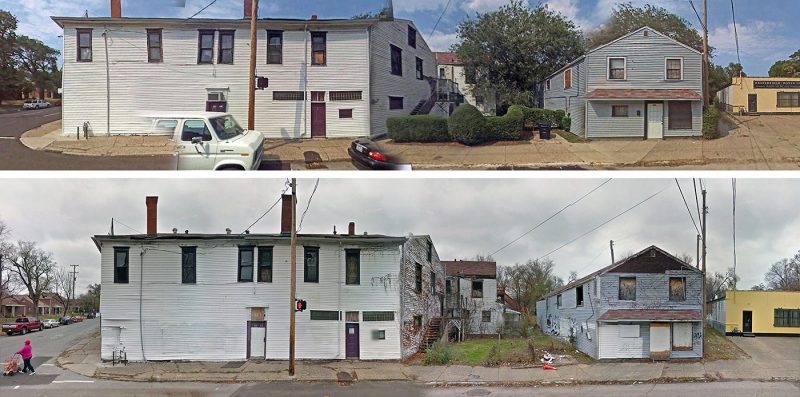
Behind the retail building and the house, another two-story frame building faces Kentucky Street. It replaced a low building, likely a carriage house, built with the grocery, but its history is a bit more mysterious. Based on architectural details, we’d estimate construction in the 1930s or ’40s, but the official date it unknown. Inspections show that much of the building has rotted and the foundation is noncontinuous, marking a building of poor quality.
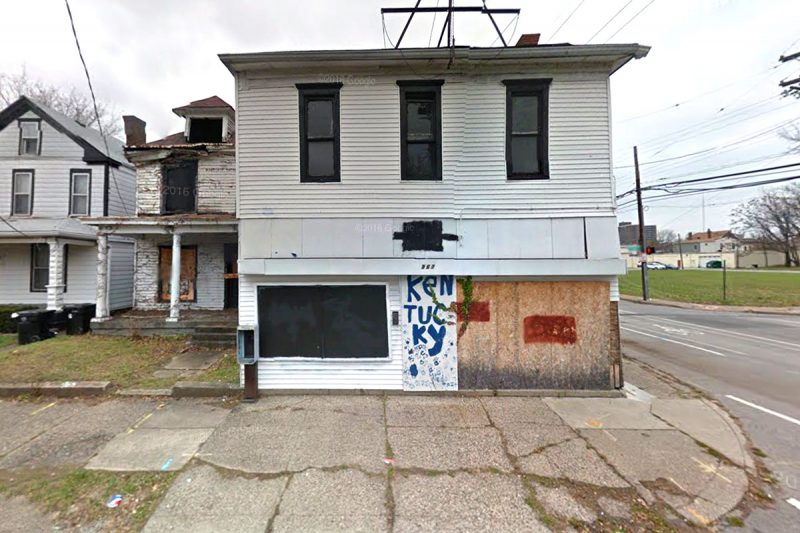
Present Day
Skipping forward, by 2007 the corner was in good repair, housing the Gilead Faith & Deliverance Ministries, according to Google Street View. Sometime between 2011 and 2014, that ministry shuttered and with it came rapid deterioration. Vines covered the walls, modern siding began to peel off, and an errant driver hit the corner structure, forcing the removal of its gas line.
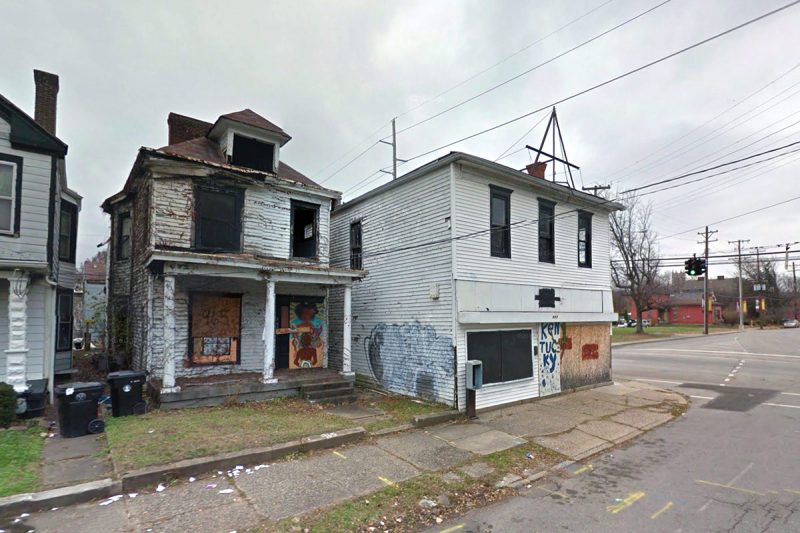
“It looks bad—it was hit by a car,” Dr. Daniel Vivian, Associate Professor of History at the University of Louisville, told Broken Sidewalk. He lives nearby in Old Louisville and has been watching the buildings change over the years. “My sense is that that it looks to be in worse condition than it actually is.” He pointed out that layers of newer siding often warp and peel, amplifying the sense of decay.
“It looks to me as a key property for revitalization,” he continued. “Especially with Simmons [College of Kentucky] taking off the way they are.” Spalding University is also prepared to begin construction on its large sports complex one block west. When complete, a corner cafe or pub would be a welcome addition for residents and sports fans alike. A mindful rehabilitation of the corner could bring cheering sports fans back to this corner after a century of quiet.
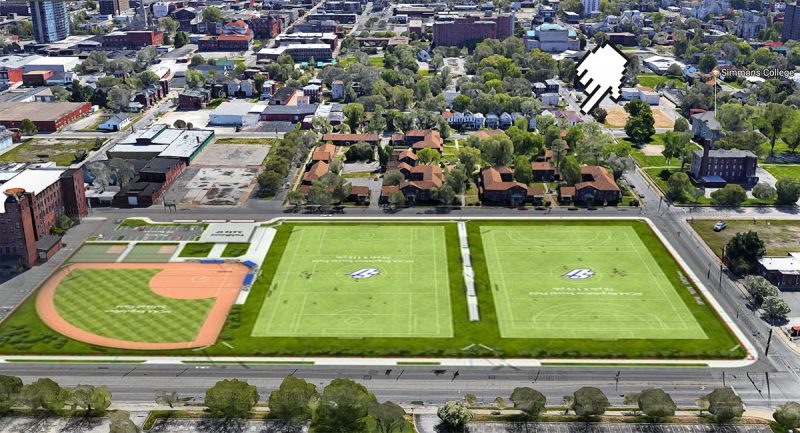
All three buildings have been owned by Carl & LaShonda Fletcher of Sellersburg, Indiana, since 2000. The couple appears to now work with a new ministry on South Preston Street.
Demolition Requested
It took many by surprise last Wednesday when the properties appeared on the agenda of the Limerick Architectural Review Commission (ARC) requesting demolition. Limerick, after all, is a landmark preservation district, and carries protections for the buildings that fall within its boundaries. It’s up to the ARC to decide the fate of buildings within the district bounds, but with the risk of setting too loose a demolition precedent for the rest of the neighborhood.
The application for demolition was made by Develop Louisville’s Vacant & Public Property Administration (VPPA) per Chapter 156.807 of the city’s Property Maintenance Code:
The Code Official shall order the owner of premises upon which is located any structure or part thereof, which in the Code Official’s judgement is so old, dilapidated or has become so out of repair as to be dangerous, unsafe, unsanitary or otherwise unfit for human habitation or occupancy, and to demolish and remove such structure or part thereof.
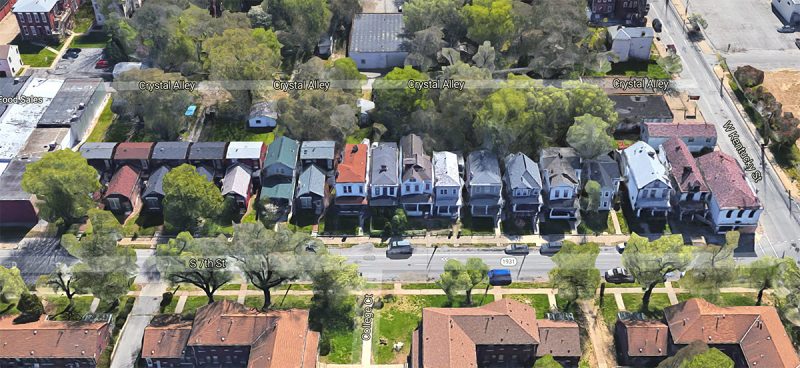
Staff reports from Planning & Design noted that the applications are “techinically a case of demolition by neglect” due to the owner’s failure to provide adequate and timely maintenance to the property. “Cases of demolition by neglect are typically not approved by the ARC,” the report reads, “and demolition by neglect is not a factor considered when an applicant applies for economic hardship to demolish a structure.”
Staff concluded that the house and corner store contributed to the integrity of the Limerick district while the outbuilding did not. The report says “any rehabilitation would be more like reconstruction” due to the state of deterioration. The reports ultimately recommended denying demolition of the house and corner store. The outbuilding at 621 West Kentucky Street was recommended for demolition.
Public Meeting
The Limerick ARC meets this Wednesday, April 26 at 5:30p.m. in room 101 of the Metro Development Center, 444 South Fifth Street. The meeting is open to the public.

Change of Plans
The next day, VPPA requested a deferral for the two buildings the staff report recommended keeping. Those cases will be heard at a later, undefined date. But the ARC will decide on the outbuilding at this week’s meeting.
The Fletchers are going through foreclosure on the properties to clear around $100,000 in violations and fines, which could take one to three years, according to city documents. The vacant land would later be sold or auctioned at the Jefferson Circuit Court Commissioner’s Sale.
Carrie Fry, Demolition Coordinator at VPPA, is currently out of town and could not provide further information on the case. Another request for information from VPPA went unanswered as of press time.
UPDATE! We heard back from VPPA’s Laura Grabowski and she gave us a few more details. She said the VPPA is re-evaluating whether it will seek demolition on the house and corner store in light of the Planning & Design staff reports, and will have more information when they go back to the Limerick ARC.
In this case, there may be room for a buyer to purchase the house and corner store at auction. But, of course, deterioration doesn’t stop for foreclosure hearings. “These properties will most likely be sold at Commissioner’s sale,” Grabowski wrote in an email. “Information on properties offered at Commissioner’s sales can be found at their website. If anyone is interested in Landbank-owned vacant properties, they are offered for sale through an RFP process approximately 6 times as year. Information on those sales can be found at VPPA’s website.

An Uncertain Future
The most significant buildings—the store and house facing Seventh Street—achieved a sort of stay of demolition for the moment. But their day on the chopping block will return. The Limerick ARC will be faced with important decisions on the future of the historic neighborhood.
“If it’s an empty lot, it’s liable to stay that way for a long time,” Vivian said of the corner. The block on Seventh stretches south quite intact for several hundred feet. Opening up a hole here could lead to a permanent scar on the preservation district.
We don’t want to inaugurate a new “Limerick” for the occasion of demolishing three more buildings in a preservation district. But if we had to it might read like this:
There once was a wrecking ball in Louisville,
Who never met a building it couldn’t kill.
So with fury and might,
In the middle of night,
Bricks tumble and this place becomes run-of-the-mill.
There’s still time for these house and store. The Limerick ARC will eventually decide their fates. But each day these buildings go with more neglect, the more danger they’re in.
What would you like to see happen at the corner? Should the outbuilding be rebuilt to define a backyard courtyard space for a cafe? Is Limerick finally ready to cast off a sleepy shroud and stand tall next to its grand neighbor Old Louisville? Share your thoughts in the comments below.

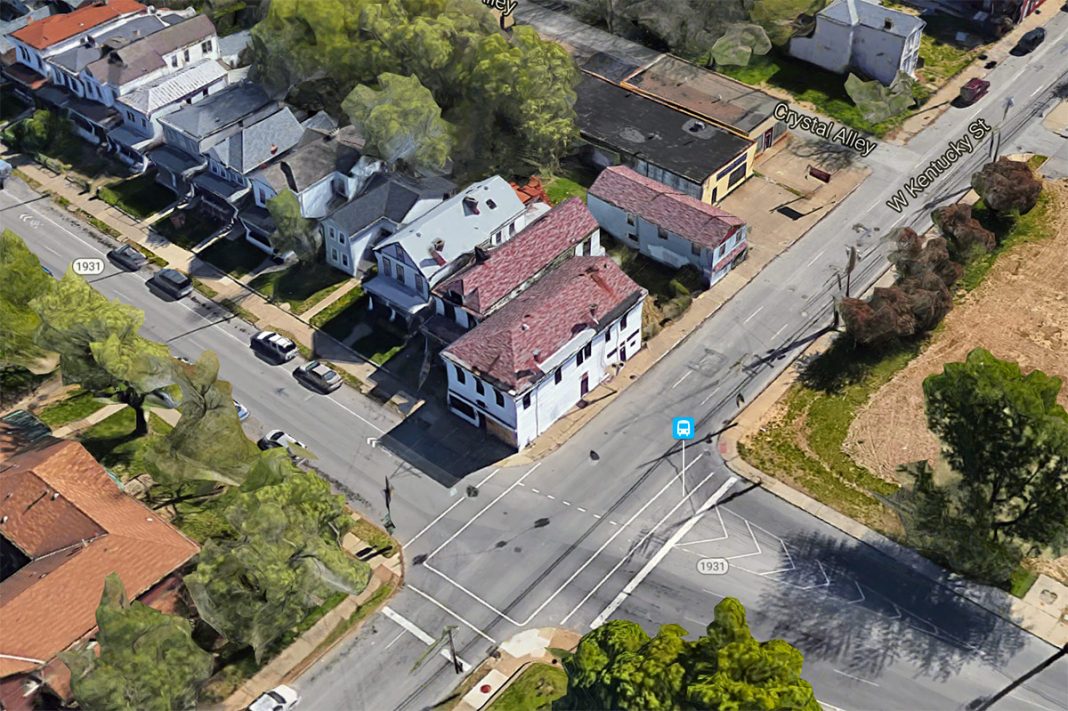

It was Mr Cash’ Al-Dee Liquor Store, “”do it Al-Dee” long. Seriously. It’s quite unfortunate that preservation , once the hallmark of this city and still why people come here to see what their cities lost decades ago, has been made the poor bastard stepchild of DevelopAtAnyCostLouisville. Forward indeed. A number of years ago metro mistakenly demoed one of the iconic brick camels up the street, citing the oops factor . Many others – including the now faceless house in the 1400 block just of Sixth, set without any secure fencing or other means of protection, as if nobody wanted them saved. I know for a fact there are folks waiting to save all of them.
Old Louisville and Limerick have not been In such a catastrophic state since Landmarks began in 1973. But when you want something gone – you Trump it All Dee Long.
I’d actually be for demoing it and building some kind of corner park. That area is all concrete, and there’s commercial development going in a block up the street. I’m not saying it wouldn’t make a cool coffee shop or something, but that’s about all it could be, it’s a small building. It’s not going to be a corner grocery, those days are over, it’s obvious. It’d probably serve a better purpose as green space. My friend owns a house up from that and it’d make that area a lot nicer if there was just a small green patch there to offset the huge parking lot at the Edison Center.